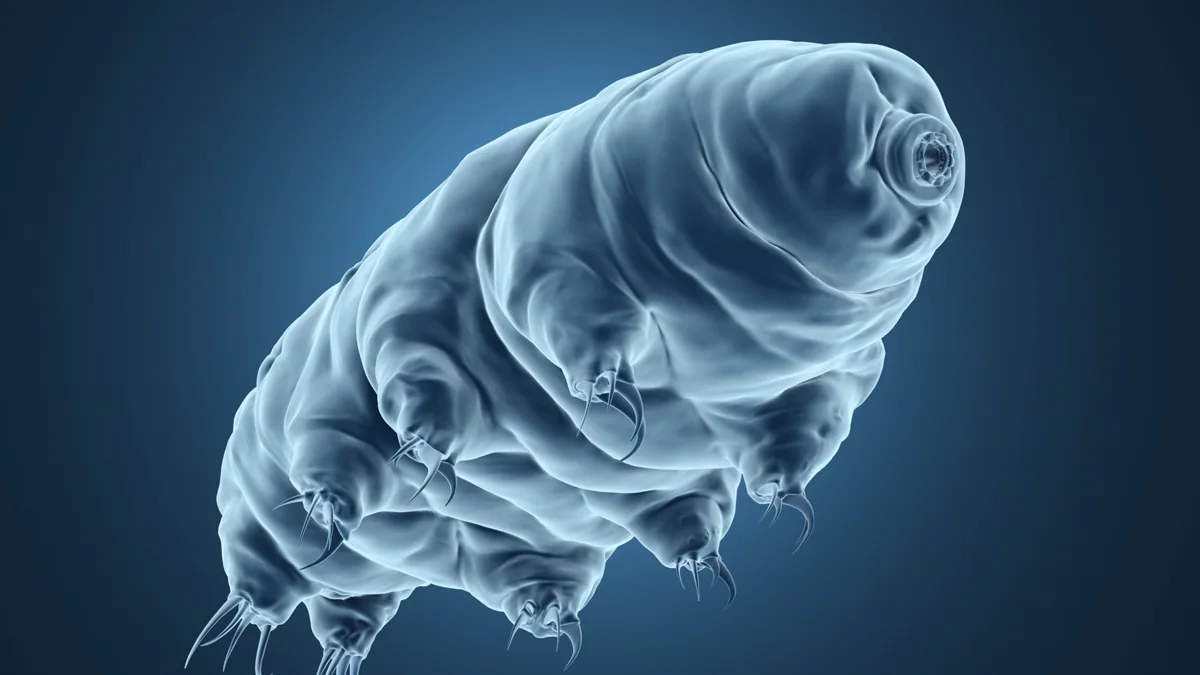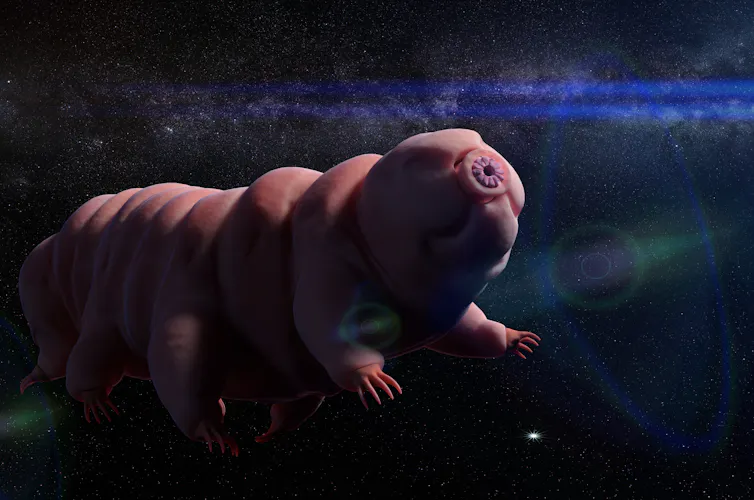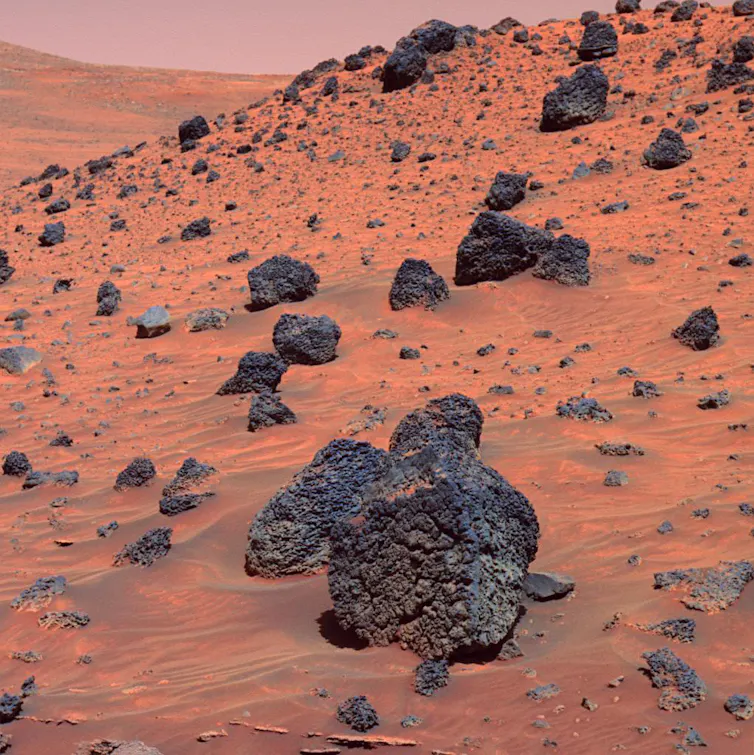
Tardigrades: we’re now polluting the moon with little creatures
I’m not concerned about polluting the moon with organisms that might reanimate. My concern is about polluting the moon, full stop.
An Israeli spacecraft called Beresheet almost made it to the moon in April. It took a selfie with the lunar surface in the background, but then lost contact with Earth and presumably crashed onto the lunar surface. Now it’s been revealed that the mission was carrying a cargo of dehydrated microscopic lifeforms known as tardigrades.
Beresheet was the first stage of a privately-funded initiative to transfer living DNA to the moon. The project is designed to act as Noah’s Ark Mark II, providing a repository from which plants and animals could be regenerated to repopulate the Earth should a catastrophe akin to a flood of biblical proportions overtake the planet.
Whether the project is far-sighted or foolish, what has roused interest is the fact that, as a result of the crash, the tardigrades may now be scattered across the lunar surface. They are hardy creatures and could probably survive on the moon for a long time. Is this a matter of concern? I believe so, but possibly not for the reasons you might think.
Tardigrades are odd little creatures. Measuring up to about half a millimetre long, they have four pairs of stubby legs and a front-end that even the fondest parent couldn’t describe as beautiful. Striking, or distinctive, are my adjectives of choice. Moon-faced would be appropriate, given the context of the story – with a rounded, sucker-like structure in the centre that can project outwards, revealing a set of dangerous-looking sharp teeth.
They’re often called “water bears” but the images of tardigrades that I have seen remind me of a slightly over-inflated blimp, one of those large balloons that float overhead at carnivals. The legs stick out at a slight angle, as if they are too swollen to stand upright. And that is probably the clue as to why it is extremely unlikely that the creatures will survive indefinitely on the moon.

Tardigrades in space. Dotted Yeti/Shutterstock
Tardigrades can survive extremes of temperature and pressure, including the frigid vacuum of space. They don’t seem to mind being exposed to radiation and are all-round tough little creatures. When dehydrated, they roll up into a spore-like state that slows down their metabolic rate by about a hundred-fold, enabling them to survive for potentially over 100 years.
But to live their life to the fullest requires water. It’s where they get their oxygen and food, typically colonising clumps of algae or burrowing into sediment to ingest nutrients from the fluid of other living creatures, even other tardigrades. So while the tardigrades will technically stay alive on the moon for some length of time in their rolled-up state, unless they are rescued, rehydrated and refuelled, they will eventually perish.
INTERPLANETARY POLLUTION
I’m not concerned about polluting the moon with organisms that might reanimate. My concern is about polluting the moon, full stop. There is already a fairly sizeable amount of debris from redundant spacecraft and litter left behind by astronauts. As more missions are planned to the moon, eventually with human passengers and perhaps even settlements, we must learn to clean up as we go along. Otherwise, we are going to have the sort of crisis that we are seeing on Earth with the outcry about environmental damage from plastics.
There is, though, another question to consider. What if the spacecraft had crashed as it approached Mars rather than the moon? The planet has had a poor record for successful landings, although it is much improved in the past decade. Would the tardigrades have survived atmospheric entry? Even though the atmosphere of Mars is thin, it still provides sufficient resistance to cause serious damage to the outer shell of an entry vehicle.
If they had survived, would they ultimately be any more successfully on Mars than on the moon? We know there is plenty of ice below the immediate surface across much of the planet. Would an impacting spacecraft transfer sufficient energy to melt a local region of ice? Could that meltwater survive without sublimating away or refreezing for long enough that the tardigrades rehydrate and wake up?

The surface of Mars should be kept pristine. NASA
I have no idea, but let’s speculate that the answer to the two questions is “yes”, and that following a crash, a flock (herd? shoal? pack?) of tardigrades reactivates. What happens next? As detailed above, tardigrades need water to survive, not just to rehydrate them. They live on fluids derived from other living beings. And, as far as we know, there are no living beings on Mars.
But we still keep sending spacecraft to look for life. Sending a cargo of tardigrades to Mars would be irresponsible, even if we don’t believe they would survive. Irresponsible because Mars has the potential for life. Restricted life, for sure, but we have no right to endanger that life. And we have a responsibility to maintain Mars as close to pristine as possible, exploring it with care.
Read more: To the moon and beyond podcast series – Trailer
That is why space agencies take such stringent precautions about spacecraft construction. The rooms in which the craft are built are cleaner and more sterile than any operating theatre. They take every precaution to ensure that no terrestrial life is transferred to Mars.
NASA and ESA are currently planning a mission to return samples from Mars to Earth. And precautions about the possibility of returning Martian life to Earth with the rocks are central to the design and build of the spacecraft.
Last week, we had an asteroid passing close to the Earth. Next week, maybe it will be killer bees. Or a plague of thieving magpies. But for now it is water bears on the moon. We should let them shrivel slowly into oblivion.

Monica Grady, Professor of Planetary and Space Sciences, The Open University
This article is republished from The Conversation under a Creative Commons license. Read the original article.










